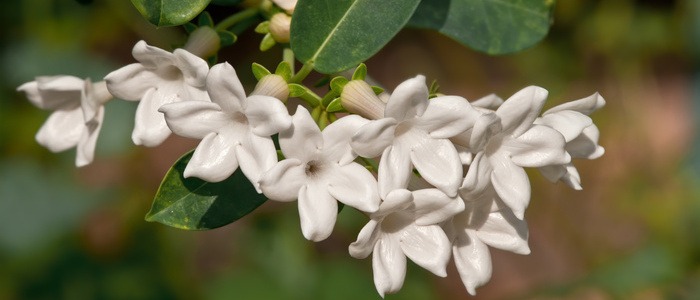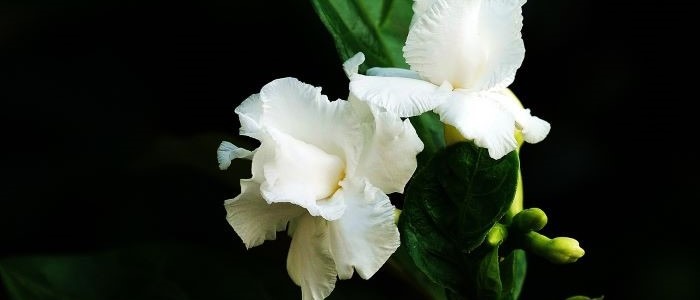White Amaryllis plants are a popular choice for gardeners and flower enthusiasts alike. The elegant white blooms of the Amaryllis can bring a touch of elegance to any garden, and with the right care they can last for years. In this article, we’ll discuss how to grow and care for a white Amaryllis plant, including tips on selecting the right location, preparing the soil, providing adequate water and light, caring for it once it blooms.
We will also look at avoiding common problems with white Amaryllis plants, and when to plant for optimal flowering. By following these simple steps you can ensure that your white Amaryllis will be healthy and bloom year after year!

White Amaryllis Plants Frequently Asked Questions
Is the amaryllis plant a house plant?
Yes, the amaryllis is a popular house plant it can thrive indoors, brightening up your home during the colder months when outdoor gardening is not possible.
Do amaryllis like sun or shade?
Amaryllis plants thrive in bright, indirect sunlight. While they can tolerate some shade, they will not flower as abundantly in low-light conditions. Therefore, it is best to place your amaryllis in a location where it can receive at least six hours of sunlight each day.
Choosing the Right Location for White Amaryllis
Choosing the right location for a white Amaryllis plant is essential for ensuring it thrives and flowers. When selecting a spot to place your Amaryllis, you should consider the amount of sunlight it will receive and the temperature of the environment.
Amaryllis plants prefer full sun but can tolerate partial shade. If planting outdoors, select a spot that is sheltered from strong winds and extreme weather conditions. When planting indoors, make sure to choose a pot with adequate drainage holes. This will help ensure that your plant does not become over-watered or suffer from root rot.
The soil should also be well-draining in order for your Amaryllis to thrive. If this is not the case, you can amend the soil with sand or other organic material to improve its water retention capabilities. Keep in mind that your white Amaryllis will need an environment with temperatures ranging from 65-80 degrees Fahrenheit in order to properly grow and bloom.
Finally, when planting your white Amaryllis outdoors, you may want to pay attention to how much wind it is exposed to as this can cause damage to its delicate blooms. If possible, try and find a location that provides some shelter from strong winds so that your beautiful flowers are protected from any potential harm!
Preparing the Soil and Planting the Amaryllis Bulb
When it comes to planting white Amaryllis, you must first choose a pot with a drainage hole that is wide enough to comfortably fit the bulb but not too large. Fill the pot with a well-draining soil mix, such as one that is composed of composted bark and peat moss. This will ensure that the bulb receives adequate oxygen and water without becoming soggy.
Position the bulb so that its neck is sticking out of the soil and cover with more soil until just its tip is visible. Water lightly until the soil is moist – do not saturate it – and place in a warm location with plenty of indirect light. Although white Amaryllis plants prefer a warm climate, they should be brought indoors before temperatures drop below 50 degrees Fahrenheit.
At this point, keep them in an area where they can receive plenty of indirect sunlight, such as next to a window or near an artificial light source. If planting outdoors in summertime, remember to protect their delicate blooms from strong winds. Once planted, monitor your white Amaryllis plant regularly for signs of optimal growth. The stalk should emerge within 3-4 weeks after planting and bloom within 8-12 weeks after emergence. This will .depend on how early you planted them in springtime or late in wintertime.
Although they may only last about two months after flowering has finished, you can extend their lifespan by providing them with proper care throughout their growth period: keep the soil moist but not sodden; fertilize weekly once flower buds appear; deadhead old blooms; and remove any yellowing foliage as soon as possible for healthier plants overall.
Providing Adequate Water and Light for Amaryllis
Providing adequate water and light is essential for growing and caring for white Amaryllis plants. The plant should be placed in an area that gets bright, indirect sunlight for at least six hours a day. If the plant is placed in direct sunlight, it may cause the foliage to burn or turn brown.
Additionally, make sure to keep the soil evenly moist but not soggy as this can cause rot or fungal diseases. It’s important to water your Amaryllis thoroughly and deeply every few days when it’s actively growing during its bloom period in the winter months.
Fertilizing your Amaryllis with a balanced fertilizer once every two weeks will help ensure successful blooming each season. However, avoid applying fertilizer during dormancy periods since too much fertilizer can damage young bulbs and reduce their flowering potential.
When temperatures drop below 50 degrees Fahrenheit in late fall, bring your potted Amaryllis indoors for protection against frost damage. Keep them in a cool environment (60-65 degrees Fahrenheit) with bright light until temperatures outside warm up again in early spring when you can place them outdoors once more.
By following these tips for providing adequate water and light, you can guarantee that your white Amaryllis will thrive! With proper care and maintenance, you’ll be able to enjoy its beautiful blooms year after year!
Caring for the White Amaryllis Plant Once it Blooms
When caring for your white Amaryllis, it’s essential that you provide adequate water and fertilizer in order to keep the plant healthy. Water when the top inch of soil is dry and fertilize your Amaryllis every two weeks with a balanced fertilizer. Additionally, you should keep an eye out for spent blooms to pinch off as soon as you notice them; this encourages new growth and prevents energy from being used to produce seedpods instead of flowers.
It’s also important to regularly check the leaves of your white Amaryllis for signs of pests or diseases such as aphids or rot. If caught early, these issues are easier to treat before they become more serious problems. Should temperatures drop below 50 degrees Fahrenheit in late fall or winter, bring your potted white Amaryllis indoors where it can receive bright but indirect sunlight for at least six hours a day – be sure to monitor its moisture levels while inside.
With regular care and maintenance throughout all stages of its life cycle, your beautiful white Amaryllis will continue blooming year after year! Make sure that you provide adequate water and fertilizer, pinch off spent blooms when they appear, watch out for pest infestations or disease symptoms on the leaves, and bring the plant indoors if temperatures start dropping too low outside. By following these simple steps you can ensure successful blooming with your white Amaryllis!
Common Problems with White Amaryllis
.
White Amaryllis plants can be susceptible to a variety of problems that can hinder their growth and prevent them from blooming. Over-watering is one of the most common issues, and can lead to yellow or brown leaves, root rot, and an overall weak plant. To avoid this problem, it is important to check the soil regularly and water only when necessary.
On the other hand, dry and wilted leaves can indicate a lack of water; if this occurs, it is important to check the soil for moisture levels and water as needed. In addition to providing adequate water, white Amaryllis plants should also be re-potted every two or three years in order to ensure continued blooming. This will help keep the roots healthy by preventing them from becoming overgrown.
Additionally, it is important to monitor for any insect infestations such as aphids or thrips that may damage the plant’s leaves or buds; treating any pests with an appropriate insecticide can help prevent further damage. Furthermore, amaryllis mosaic virus should be avoided by controlling insect populations around the plant; this virus causes white spots on the leaves and stunted growth.
Finally, white Amaryllis plants require bright light in order to thrive; without enough light they may stretch out in an attempt to reach more light. If this occurs it is important to move your plant into a brighter location where it will receive at least six hours of indirect sunlight per day. With proper care and maintenance you can ensure successful blooming from your white Amaryllis year after year!
Conclusion
The Final Thoughts section of this blog post focuses on the importance of summer planting for optimal flowering of white Amaryllis plants. Planting during the summer months, when the temperatures are warm and days are longer, is ideal for successful growth and blooming. Additionally, it is important to select a potting soil that drains well and contains organic matter, such as compost or peat moss.
Providing adequate light is also essential for healthy growth and blooming; white Amaryllis plants should receive six hours of bright indirect sunlight per day. Lastly, it is important to keep the soil moist but not wet – water only when necessary – and fertilize weekly once flower buds appear.
Once a white Amaryllis plant has finished blooming, deadhead old flowers by cutting them off at the base with sharp scissors. This encourages new buds to form in future seasons. If temperatures drop below 50 degrees Fahrenheit, bring the potted plant indoors for protection against frost damage. With proper care and maintenance, your white Amaryllis plant can be successfully grown year after year.
In conclusion, growing and caring for a white Amaryllis plant requires attention to detail but can be rewarding if done correctly. It is important to choose the right location, prepare the soil correctly, provide adequate water and light, fertilize regularly once flower buds appear, deadhead spent blooms once they finish flowering and bring them indoors before temperatures dip below 50 degrees Fahrenheit in late fall if planted outdoors. With proper care throughout its growth period you can ensure successful blooming from these beautiful plants year after year!
Other White House Plants










